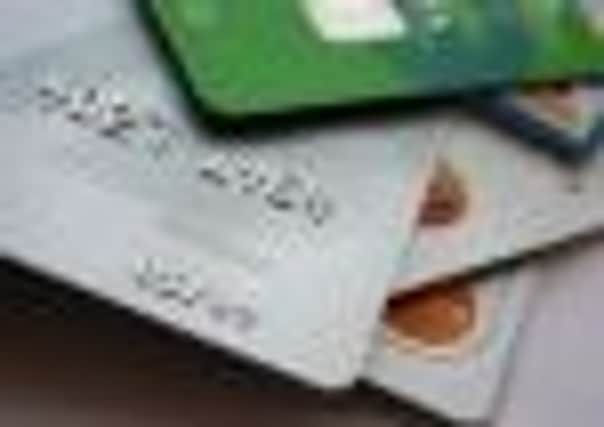Pin number still king as contactless payments prove a flop


A recent wave of new technology launches by banks and telecoms providers allowing consumers to pay for goods without plugging in their pin number has sparked a flurry of excitement among technology observers.
But for the majority of people living in the UK, the new generation of so-called “contactless” payments via a mobile phone, or even cards which can be waved above a terminal to process transactions, are still a long way off – while payments using cash and credit or debit cards fitted with a chip and pin remain king.
Advertisement
Hide AdAdvertisement
Hide AdThe latest figures from the UK Cards Association show that the number of contactless cards in issue in the UK is 19.6 million – while there are only 73,000 contactless terminals in retailers nationwide.
Meanwhile, an annual study by the British Retail Consortium into methods of payment used found that contactless payments account for such a small proportion of transactions that there would be little point in listing them separately – while cash still accounts for a third of the value of all transactions made in the UK.
“There is an impression being created that this is going to become enormously popular very quickly – and that doesn’t match the facts,” said Richard Dodd, spokesman for the Scottish Retail Consortium. “However, these things are developing – and are going to develop further – and there is big potential for contactless technology encroaching into the market for low-value payments.”
While some financial institutions are focusing on contactless card payments, other banks – and retailers – are branching out into the concept of a mobile phone as a way to pay.
The latest card technology allows customers of certain banks to pay for small purchases by waving their debit card over a sensor, rather than scrabble around for small change – while other innovations include stickers for the back of any mobile phone which allows the the consumer to pay via contactless terminals and apps which allow smartphone users to transfer money between accounts.
Major brands such as Boots, EAT, Pret a Manger and Stagecoach Group have previously signed up to card-based contactless payments, but very few independent retailers have the resources to invest in the technology.
In cities such as London, which uses the Oyster card system, a contactless means of paying for public transport is already in place – while elsewhere, such as in Hong Kong, a similar scheme has been extended even further to allow the user to charge their “travel” card to pay into museums, galleries and even the island’s racecourse.
And the concept of using cash via mobile phone is creeping into society as many charities have now launched a method of donations by texting a dedicated number – with the cost of the donation taken off the customer’s bill at the end of the month.
Advertisement
Hide AdAdvertisement
Hide AdExperts believe that the rapid growth of the technology will attract more people in the coming years – but others warned that it could be some time before the concept becomes part of everyday life due to high costs for retailers to take part in the scheme.
“The costs that small retailers already face for debit and credit card payments vary enormously,” added Dodd. “There would be big implications for retailers in terms of the costs.
“It seems that banks are keen to introduce these payments for things like milk and bread – which are items people would currently often pay cash for – as it is a potentially good way of making extra money.”
Earlier this week saw the launch of a mobile payment technology called Visa payWave mobile, which will be available on a range of “near field communications” phones such as the BlackBerry Bold and some types of Samsung Galaxy.
But while consumers can simply wave their phone at a payment terminal to buy less expensive items such as newspapers or coffees, they will be asked to enter a pin code for purchases of £15 or more.
The announcement was the latest in a wave of launches of similar technology which began with Barclaycard’s contactless debit cards in 2008. Last week, the bank revealed a new smartphone app, Pingit, which allows users to transfer money between bank accounts by just using their phone – or situations such as paying a friend for dinner, or settling a bill with a window cleaner – while credit card firm Mastercard recently announced its PayPass system, where mobile phone networks can send customers a sticker to put on any existing phone, via which they can pay for goods.
However, one of the key differences between the contactless mobile payments services rolled out so far and contactless cards is that contactless card payments are linked to the consumer’s existing account – either current account or credit card – whereas the contactless mobile services require the set up of a prepaid card which is “charged up” with funds.
“I think this year is going to be a big year for mobile payments,” said Neil Aitken, spokesman for the Payments Council, which oversees payment services in the UK. “As banks roll this out to more and more customers and the technology becomes available on more types of mobile phone, it will increase the number of people who can use it.
Advertisement
Hide AdAdvertisement
Hide Ad“However, it is difficult to predict exactly how quickly these things are going to progress.”
Last week the Payments Council launched a project to build an industry-wide database which would allow consumers to send a payment to anyone else using a mobile without having to know their account details, regardless of who they bank with.
The scheme, Pay Your Way, which is likely to be up and running next year, will offer banks and building societies a platform for them to build their own competitive service for their customers.